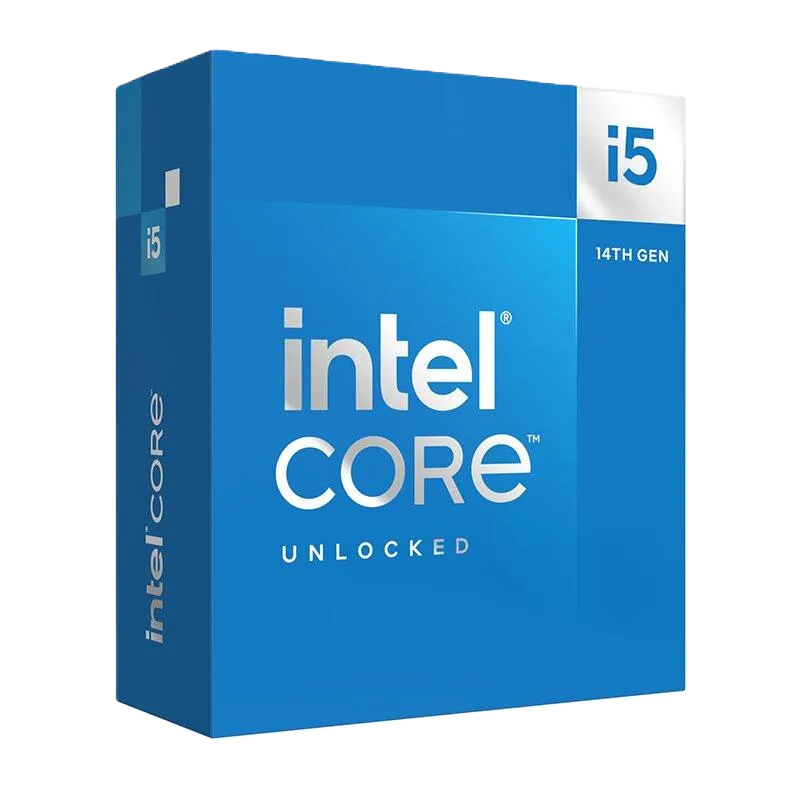
Intel
CPU
Intel Core i5-14600K
MSRP:
$235
Technical Specifications
Performance Core Clock
3.5 GHz
Performance Core Boost Clock
5.3 GHz
Base Clock
3.5 GHz
Boost Clock
5.3 GHz
L2 Cache
24
L3 Cache
24
TDP
125W
Includes Cooler
No
Socket
LGA1700
Cores
14
Threads
20
Integrated Graphics
Intel UHD Graphics 770
Maximum Supported Memory
128GB DDR5-5600
ECC Support
No
SMT Support
Yes
Release Year
2023
MSRP
$235
Manufacturer
Intel
Pros & Cons
Pros
- Good core count balances gaming and productivity performance
- Handles modern multitasking and light content creation well
- Solid for 1440p and 4K gaming
- High boost clocks provide excellent gaming performance
- Good base clocks provide stable performance
- Reasonable power consumption for the performance level
- Unlocked multiplier allows for overclocking headroom
- LGA1700 socket supports multiple Intel generations
- Wide motherboard selection with various feature levels
- DDR5 memory support provides future-proofing and bandwidth
- Integrated graphics enable system boot without dedicated GPU
- Good value proposition for the performance level
- Mainstream performance with strong price-to-performance ratio
- Ideal for gaming-focused builds with good upgrade potential
Cons
- More cores than most games can effectively utilize
- Higher cost may not benefit gaming-focused users
- Higher power consumption and heat generation
- Pricing may not reflect age compared to newer alternatives
Community Insights
- The most frequent community commentary is that the i5-14600K offers very little generational improvement. Enthusiasts often mention that it's a "refresh" chip with slightly higher clocks but no architectural changes. While it's still excellent for gaming and productivity, many recommend grabbing the cheaper 13600K or waiting for next-gen unless you're building a brand-new rig.
Frequently Asked Questions
Is the Intel Core i5-14600K worth upgrading to from the i5-13600K?
For most users, no—the performance difference between the i5-14600K and i5-13600K is minimal (typically 2–5%). Both CPUs share the same core count (14 cores: 6P + 8E) and very similar clock speeds. Unless you’re upgrading from a much older CPU (e.g., 11th gen or earlier), the 13600K is nearly identical in real-world performance but usually cheaper.
Performance Guide & Use Cases
Best For
Streaming and recording gameplay without performance loss
Game development and 3D modeling applications
Gaming builds with proven platform stability
Content creation with demanding memory requirements
Performance builds with robust cooling solutions (125W TDP)
Budget gaming builds with good price-to-performance ($235)
Overclocking enthusiasts and performance tuning
Office computers and media centers without dedicated graphics needs
Users wanting the most recent Intel technology
Potential Bottlenecks
Requires adequate cooling solution to prevent thermal throttling (125W TDP)
Overkill Scenarios
Basic photo editing in free software like GIMP
Standard productivity and media consumption
Older competitive titles like CS:GO at basic settings
Basic gaming and productivity tasks
Always-on systems prioritizing low power consumption
Compact builds with limited airflow
Basic productivity without gaming requirements
Simple web browsing and document viewing
Avoid For
Basic office work and document editing
Pure gaming builds pairing with mid-range GPUs
Stock cooler builds and basic air cooling (125W TDP)
Simple plug-and-play system requirements
Future-proofing for next-generation technologies
Always-on systems prioritizing low power consumption
PCHelperAI may earn a commission from purchases made through affiliate links to participating retailers on this site. This compensation does not influence the products shown, pricing, or the order in which prices appear. For more details, please see our full disclosure.